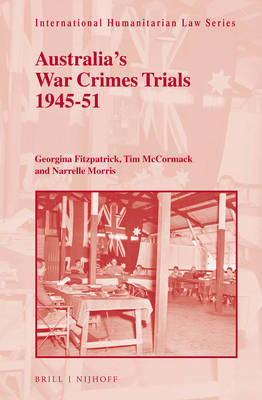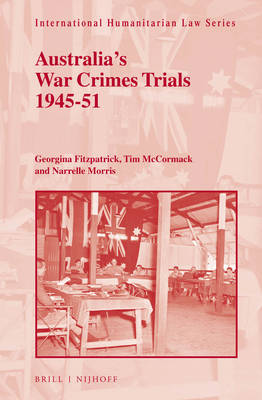
- Afhalen na 1 uur in een winkel met voorraad
- Gratis thuislevering in België vanaf € 30
- Ruim aanbod met 7 miljoen producten
- Afhalen na 1 uur in een winkel met voorraad
- Gratis thuislevering in België vanaf € 30
- Ruim aanbod met 7 miljoen producten
Zoeken
€ 625,95
+ 1251 punten
Omschrijving
This unique volume provides a detailed analysis of Australia's 300 war crimes trials of principally Japanese accused conducted in the immediate aftermath of the Second World War. Part I contains contextual essays explaining why Australia established military courts to conduct these trials and thematic essays considering various legal issues in, and historical perspectives on, the trials. Part II offers a comprehensive collection of eight location essays, one each for the physical locations where the trials were held. In Part III post-trial issues are reviewed, such as the operation of compounds for war criminals; the repatriation of convicted Japanese war criminals to serve the remainder of their sentences; and reflections of some of those convicted on their experience of the trials. In the final essay, a contemporary reflection on the fairness of the trials is provided, not on the basis of a twenty-first century critique of contemporary minimum standards of fair trial expected in the prosecution of war crimes, but by reviewing approaches taken in the trials themselves as well as from reactions to the trials by those associated with them. The essays are supported by a large collection of unique historical photographs, maps and statistical materials. There has been no systematic and comprehensive analysis of these trials so far, which has meant that they are virtually precluded from consideration as judicial precedent. This volume fills that gap, and offers scholars and practitioners an important and groundbreaking resource.
Specificaties
Betrokkenen
- Auteur(s):
- Uitgeverij:
Inhoud
- Aantal bladzijden:
- 912
- Taal:
- Engels
- Reeks:
- Reeksnummer:
- nr. 48
Eigenschappen
- Productcode (EAN):
- 9789004292048
- Verschijningsdatum:
- 25/08/2016
- Uitvoering:
- Hardcover
- Formaat:
- Genaaid
- Afmetingen:
- 157 mm x 239 mm
- Gewicht:
- 1406 g

Alleen bij Standaard Boekhandel
+ 1251 punten op je klantenkaart van Standaard Boekhandel
Beoordelingen
We publiceren alleen reviews die voldoen aan de voorwaarden voor reviews. Bekijk onze voorwaarden voor reviews.








